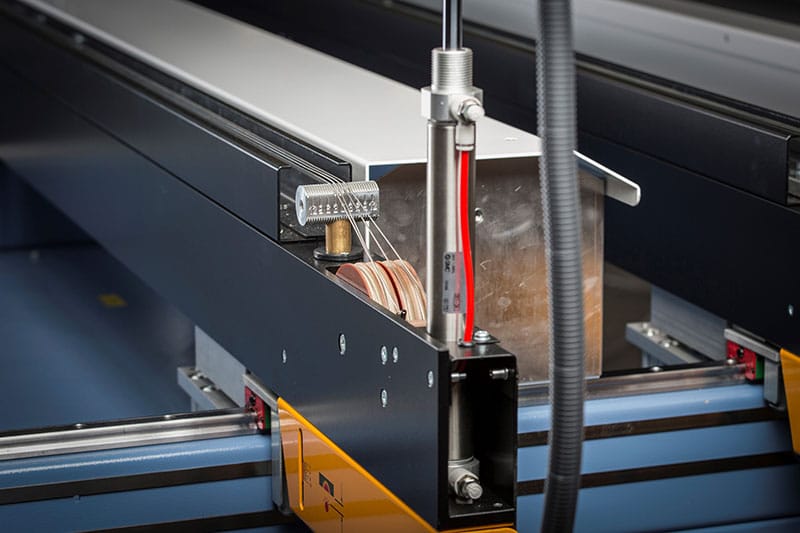Creating bespoke designs focused upon practicality in a range of materials
We have expertise in all aspects of line bending
Here at ASH Plastic we specialise in creating bespoke plastic items for clients working in sectors such as retail. These might include display options such as free standing display units and counter top displays, as well as smaller, less complex items such as leaflet holders.
In all cases, we work in close partnership with the client in order to deliver high quality products at value prices with a complete commitment to helping them achieve their vision of a particular retail space.
Line bending process
The facilities we can use include laser cutting and various thermoforming options, and we also make use of advanced line bending techniques. Line bending is invaluable when creating the likes of point of sale displays and leaflet holders, and involves bending a piece of plastic along a very precisely defined line.
The piece of plastic in question is placed over the line bender being used and left in place while the line bender heats up. When the right temperature is reached – depending upon the thickness and type of the plastic being bent – the plastic can be bent into a new position using carefully applied pressure.
Once the correct amount of bend has been achieved, the item is left to cool and harden.
Highly specialised results
We have a vast array of machines for each specific requirement from an automatic PVC Bender For POS Tickets to large sneeze guards. Although the principle of line bending is relatively simple, the reality is that it involves the use of highly specialised equipment and expert application to ensure accurate bending even when the form of the finished item is more complex in nature.
The combination of expertise and technology which we offer means that we can undertake line bending at speed and on multiple pieces of plastic while still delivering precision results time after time.
The speed at which we can work enables us to meet the kind of tight deadlines often present in the retail sector, something which is also facilitated by our in house warehousing and logistics facilities.



State of the art manufacturing facility
The work we do is based upon a combination of experience, expertise and the best technology and equipment.
The expertise is delivered by a team of technicians and engineers offering a combination of more than 100 years’ worth of experience.
These members of the ASH Plastics team work in a 20,000 sq. ft. manufacturing facility which is equipped with state of the art equipment chosen to deliver excellent results at speed and to scale.
Contact Our Experts
If you’d like to learn more about the end-to-end one stop service we could provide for your company please get in touch. Our experts are ready and waiting to answer any questions and explain exactly what we could do to turn your ideas into a reality.
Call us or send an email and we’ll start the process of delivering the solutions you’re looking for.
Tel: +44(0)1902 450 300
Email: hello@ashplastics.co.uk
Frequently Asked Questions
Line bending is a manufacturing process used to create bends within a sheet of plastic. Line bending requires localised heating of a plastic sheet, before the plastic can be bent at an angle along this heated strip, sometimes referred to as a hot hinge. A former or jig is used to bend the plastic. The plastic is then cooled and retains the shape at which it is bent.
Line bending creates a seamless angle without the need for additional operations such as joining or glueing.
Line bending products often consist of display stands, plastic boxes, leaflet dispensers, or furniture such as outdoor furniture or acrylic tables. Line bending is used to create simple shapes, where the clean look of the product is a primary focus.
Whilst line bending is limited to the production of plastic products, a range of plastics can be used to meet product requirements such as acrylic, perspex and petg.
Line bending advantages include: line bending does not require additional tooling to create the product; a seamless bend can be created, offering a flawless product; straight bends with small radiuses can be created; it is a relatively simple process to undertake, and the plastic can be reheated and reformed if the process is miscalculated, reducing scrap and manufacturing costs.
Some line bending disadvantages include: only simple shapes can be created due to the nature of the method; a line bending machine and former or jig is required to heat and shape the plastic; restriction to the number of bends in a single sheet; stress bends can occur which can deform the plastic; additional processes such as cutting may be required.
The line bending process begins with heating the strip heater or line bending machine to the correct temperature for the specific plastic. The area on the plastic sheet to be bent is marked up so the sheet can be aligned correctly with the heating element. The sheet is then laid on the heating element until it has softened; at this point the plastic sheet will be removed and placed on the former or jig where it is bent. The plastic is left in this position until it has cooled and hardened in the desired shape.
Line bending plastic is often a thermoplastic, since this type of plastic can be reheated and reformed numerous times without affecting the integrity of the material.
A variety of thermoplastic can be used, including: polycarbonate (PC), foam polyvinyl chloride (foam PVC), acrylonitrile butadiene styrene (ABS), and polypropylene (PP). Acrylic sheets such as Perspex and Plexiglass can also be formed by line bending.
A line bending machine facilitates line bending operations; it provides the heating element, as well as structures to measure and align the plastic sheet to the heating strip.
Line bending machines are available in a variety of styles and forms, for simple line bending used within schools to machines for complex, industrial, mass production; it may feature one heating element (typically a resistance wire) or several, depending on the application.